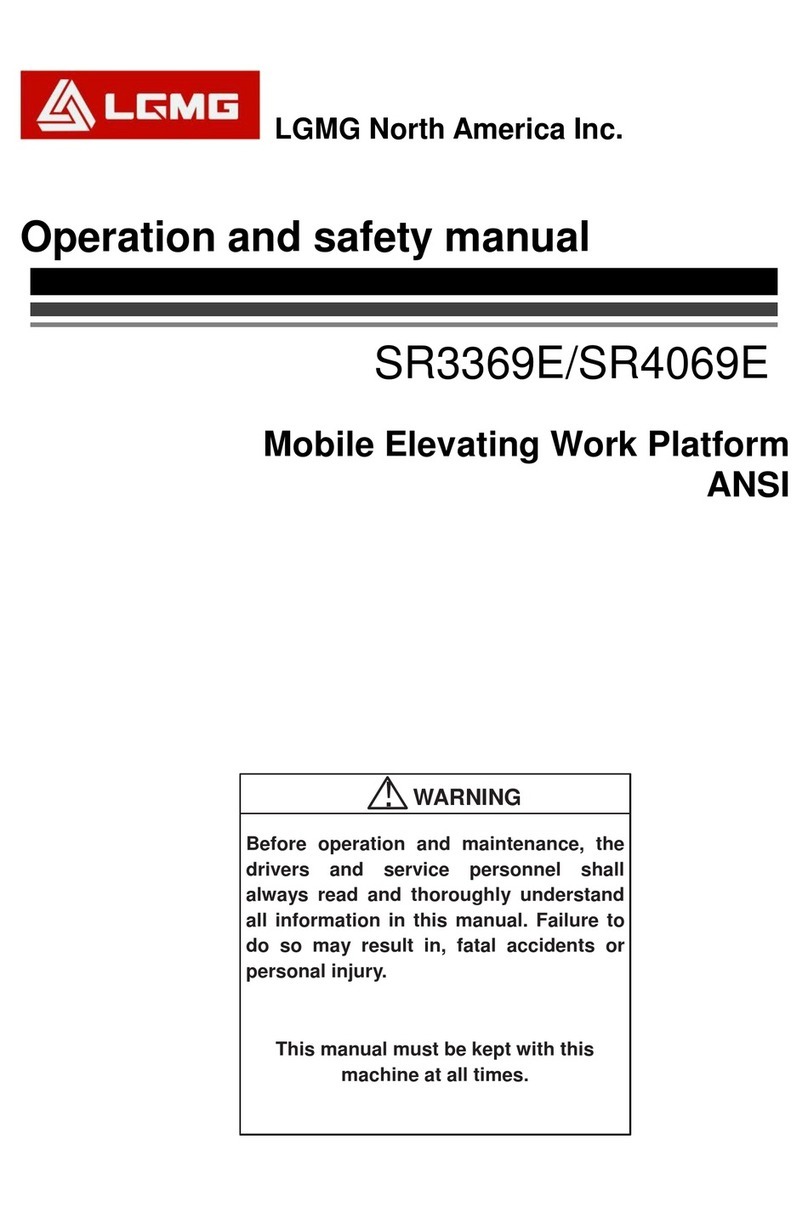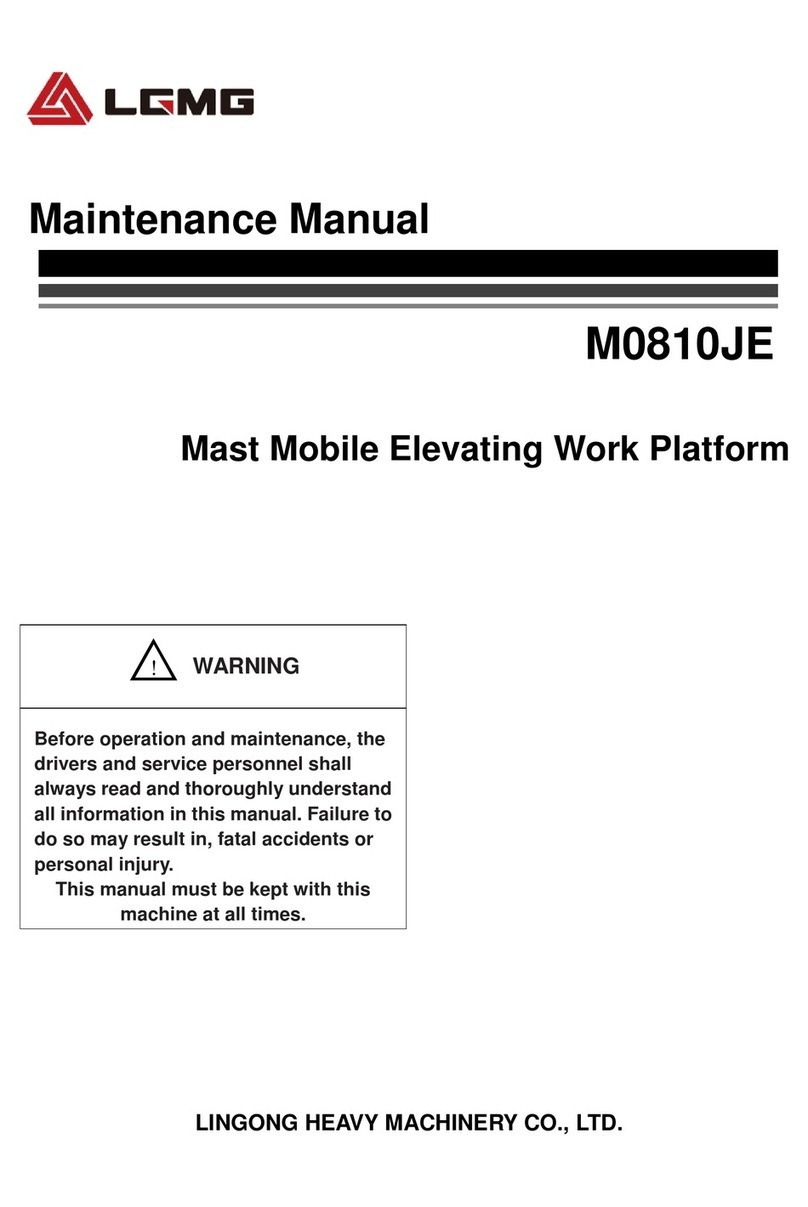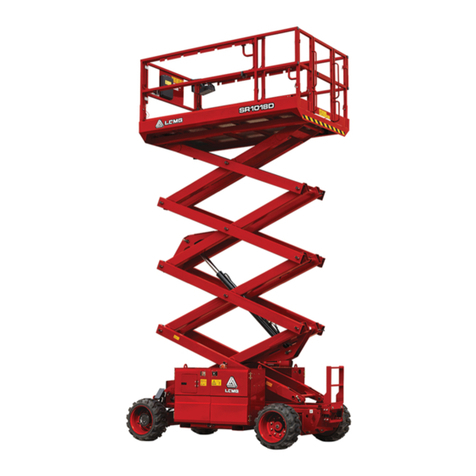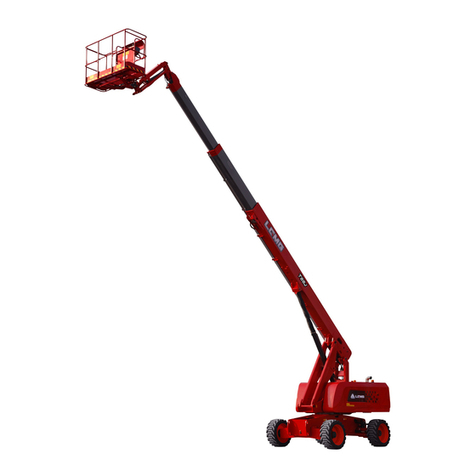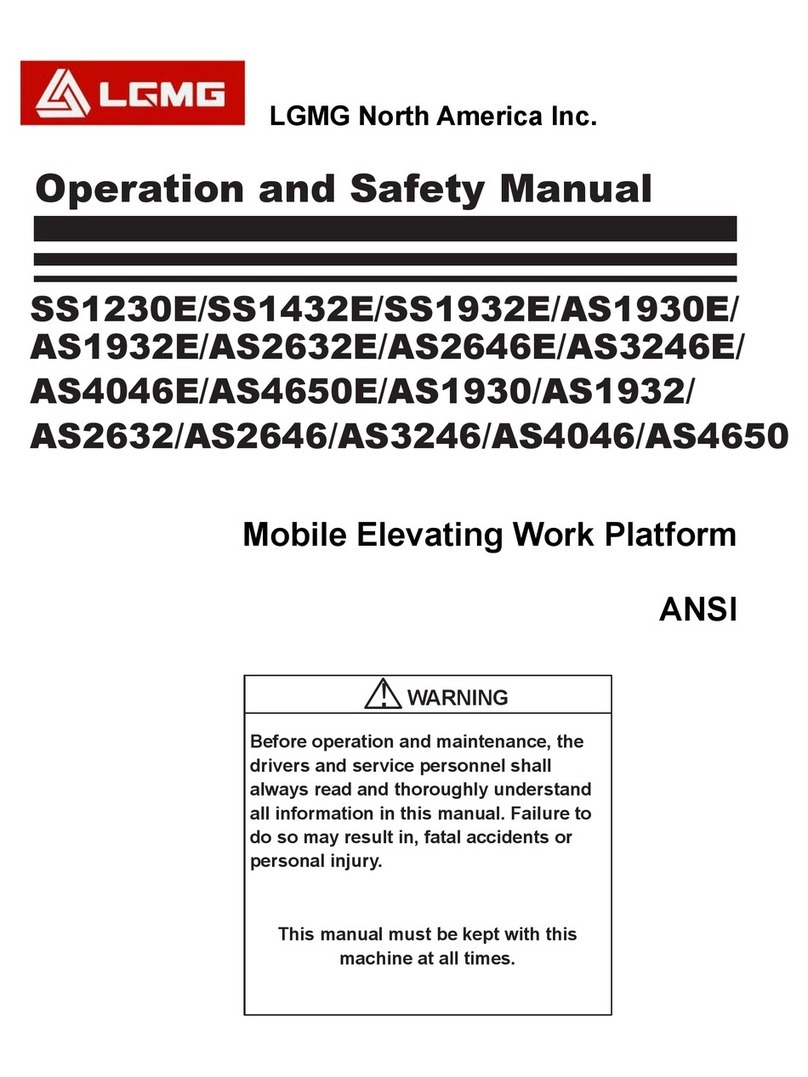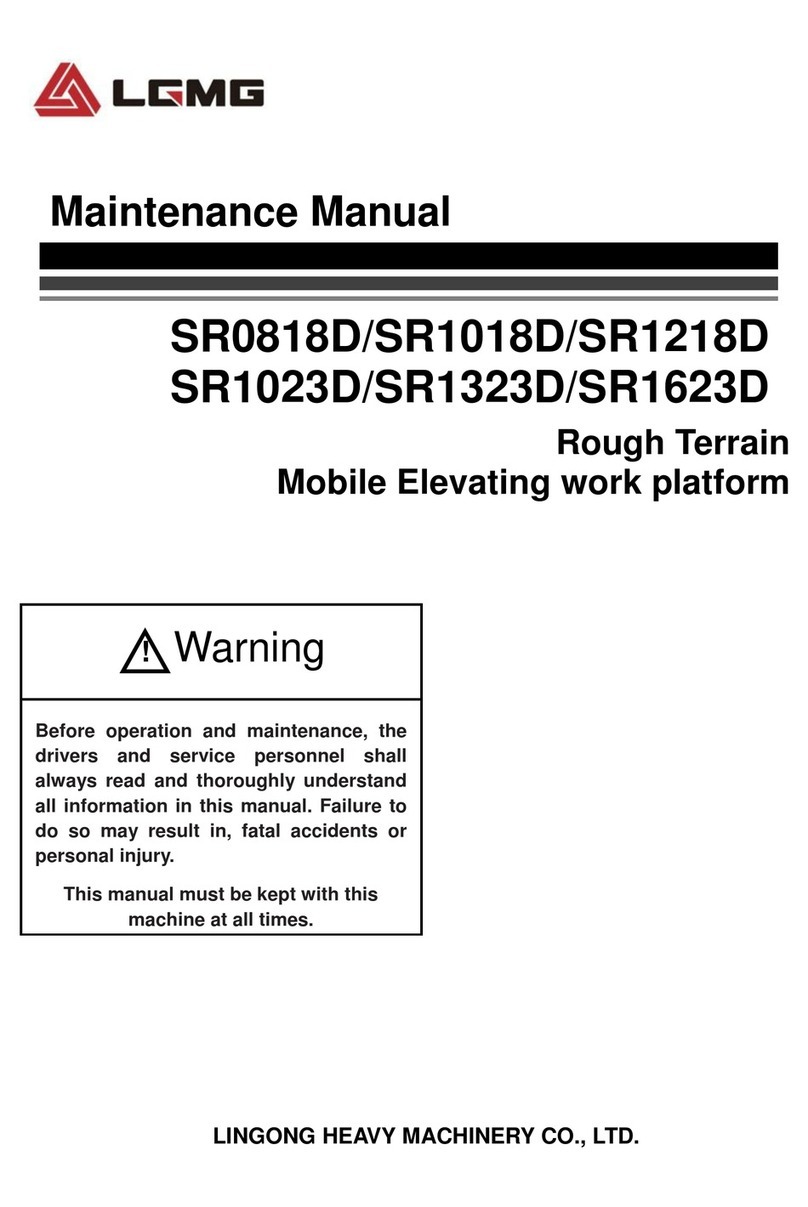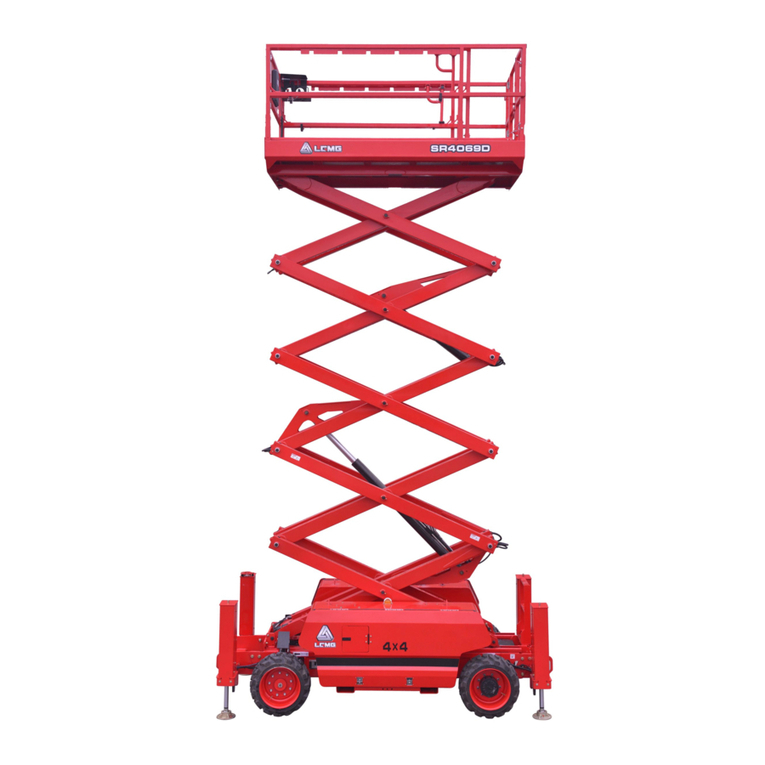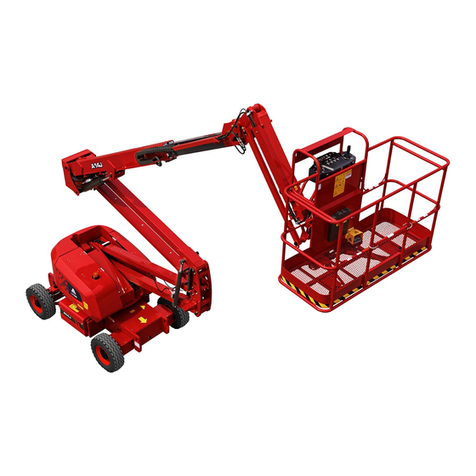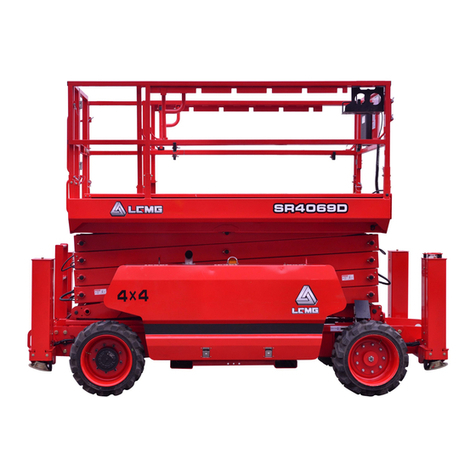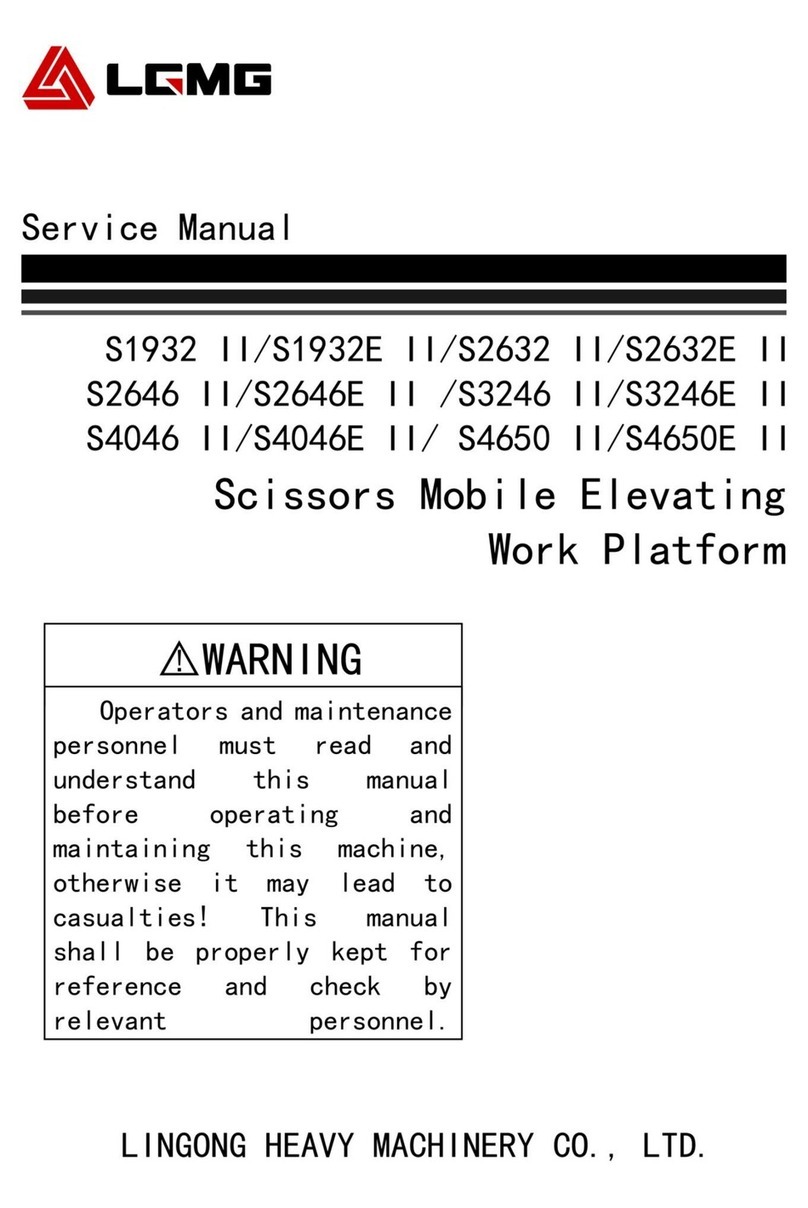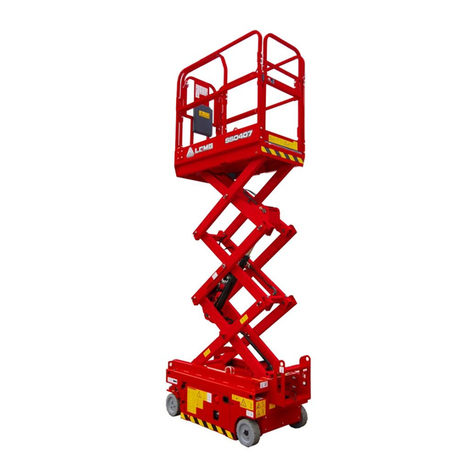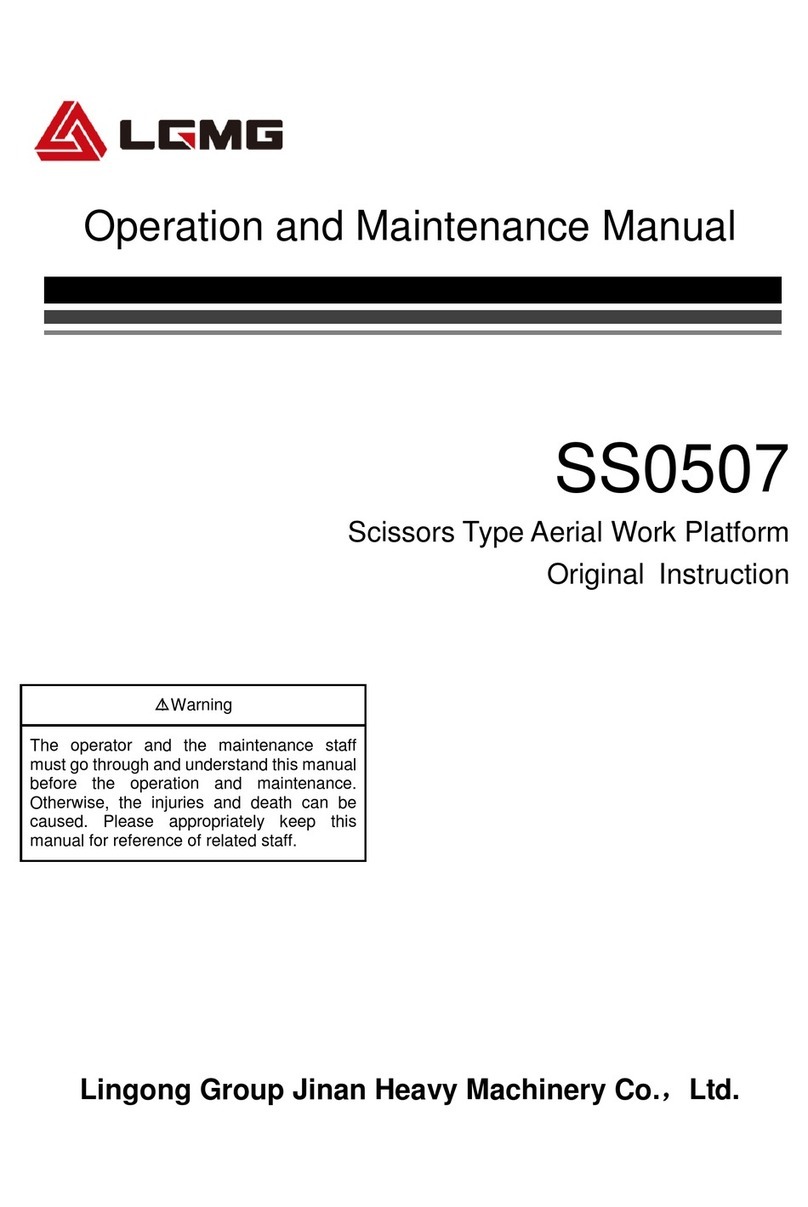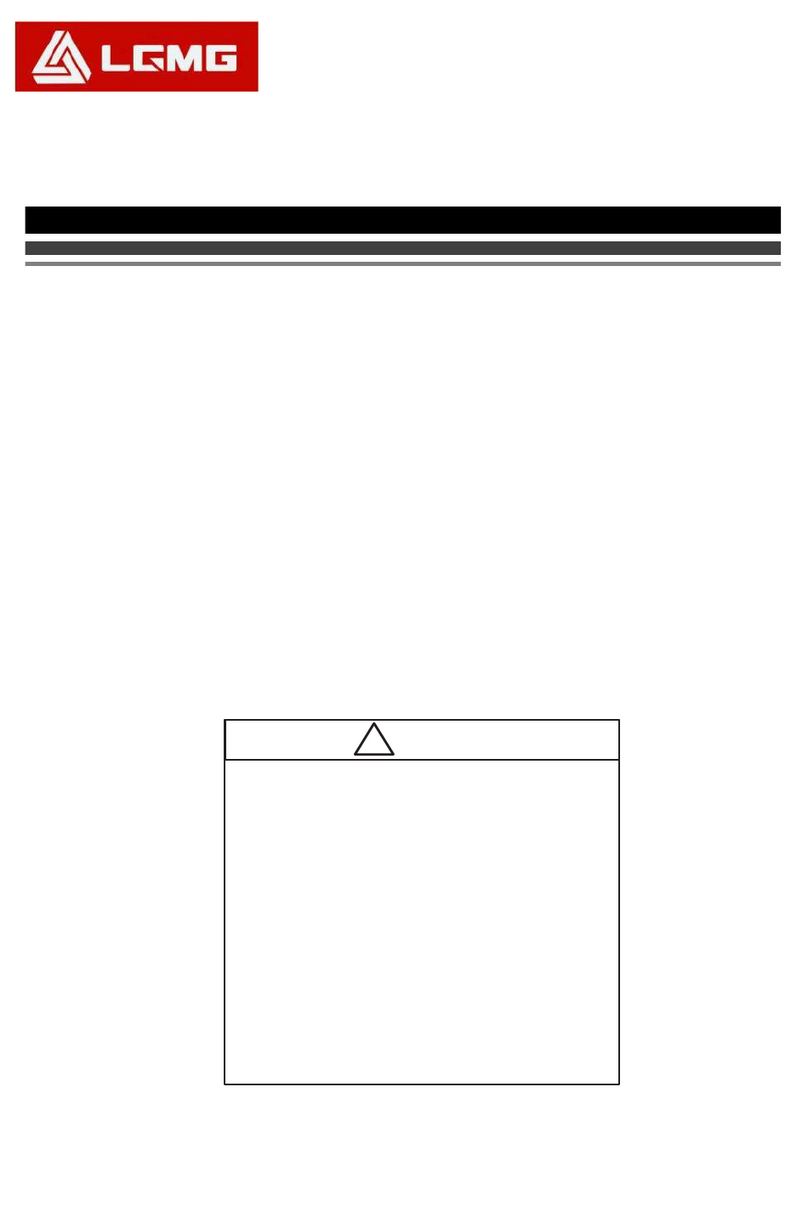
Lifting Work Platform Operation and Maintenance Manual
II
8.4 Test on the GCU............................................................................. 45
8.5 Test on PCU................................................................................... 46
8.6 Test on Operation of Inclination Sensor.......................................... 47
8.7 Test on Upper Limit Switch and Outrigger ...................................... 47
Chapter IX Operation Instructions.............................................................49
9.1 No Operation Except Following Cases ........................................... 51
9.2 Basic Principles .............................................................................. 51
9.3 Emergency Shutdown..................................................................... 51
9.4 Engine Startup................................................................................ 51
9.5 Operation from Ground................................................................... 52
9.6 Operation from Platform.................................................................. 52
9.7 Drive on Slope................................................................................ 53
9.8 Extension and Retraction Platform.................................................. 53
9.9 Emergency Descending.................................................................. 53
9.10 Operation from Ground by Control Unit......................................... 53
9.11 Outrigger operation....................................................................... 53
9.11 Use Method of Safety Arm............................................................ 54
9.12 Falling Protection.......................................................................... 54
9.13 After Each Use.............................................................................. 54
Chapter X Transportation and Lifting Instructions................................. 55
10.1 Compliance and Obedience.......................................................... 57
10.2 Being Fixed on Trucks or Trailers during Transportation............... 57
10.3 Ensuring Transportation Safety..................................................... 58
10.4 Lifting Guidance............................................................................ 58
Chapter XI Maintenance............................................................................61
11.1 Compliance and Obedience.......................................................... 63
11.2 Check for Safety Manual............................................................... 63
11.3 Check for Labels and Signs.......................................................... 63
11.4 Check for Damaged, Loose or Missing Parts................................ 63
11.5 Check for PCU and GCU.............................................................. 64
11.6 Check for Tilt Sensors and Buzzers.............................................. 65
11.7 Check for Wires............................................................................ 65
11.8 Check for Batteries....................................................................... 66
11.9 Check for Tires and Hubs ............................................................. 66
11.10 Check for Exhaust Cover of Hydraulic Oil Tank.......................... 67
11.11 Check for Hydraulic Oil Leakage................................................. 67
11.12 Check for the Hydraulic Filter...................................................... 67
11.13 Replacement of the Air Filter of the Hydraulic Oil Tank............... 68
11.14 Check Hydraulic Oil Level........................................................... 69
11.15 Test or Replacement of Hydraulic Oil.......................................... 69
11.16 Check for the Oil Level in the Reducer........................................ 70
11.17 Replacement of the Gear Oil of Reducer.................................... 70
11.18 Check for Engine Oil Level ......................................................... 71
11.19 Replacement of Engine Oil and Filter.......................................... 71












